New Ebenezer, Georgia

New Ebenezer is North of Savannah at the end of Route 275 on the Savannah River.
.

A Map of the County of Savannah 1740
(Map courtesy of University of Georgia) Click
here for larger view of map
The "Salzburgers" were Lutherans whose families had been exiled from their homes in Salzburg, Austria, for their religious beliefs. They were looking for a place to live and worship. In England, the "Society for Promoting Christian Knowledge" sponsored their passage to the new world. The first ship arrived in Savannah on March 12, 1734. The settlers founded the town of Ebenezer on Ebenezer Creek.
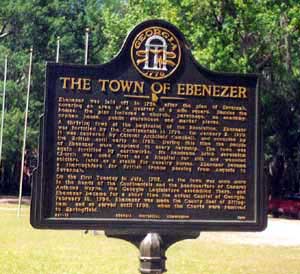
The Town of Ebenezer
Ebenezer was laid off in 1736, after the plan of Savannah, covering an area of a quarter of a mile square. Besides the homes, the plan included a church, parsonage, an academy, orphan house, public storehouse and market places. A thriving town at the beginning of the Revolution, Ebenezer was fortified by the Continentals in 1776. On January 2, 1779, it was captured by Colonel Archibald Campbell, and occupied by the British until early in 1782. During this time the people of Ebenezer were exposed to every hardship. The town was again fortified by earthworks. It's handsome brick Jerusalem Church was used first as a hospital for sick and wounded soldiers, later as a stable for cavalry horses. Ebenezer became a thoroughfare for British troops passing from Augusta to Savannah. On the first Tuesday in July, 1782, as the town was once more in the hands of the Continentals and the headquarters of General Anthony Wayne, the Georgia Legislature assembled there, and Ebenezer became for a short time the actual Capital of Georgia. February 18, 1796, Ebenezer was made the County Seat of Effingham, and so served until 1799, when the Courts were removed to Springfield.

The Plan of New Ebenzer in 1747 (Map courtesy of University of Georgia) Click
here for larger view of map
The soil was poor, and many lost their lives to famine and disease. The Salzburgers asked General Oglethorpe to let them move a short distance to the more fertile banks of the Savannah River. In 1736, they founded New Ebenezer. It grew to about 2,000 residents. Each family was given a town lot for their home, a 2-acre garden plot on the edge of the town and a 50-acre farm further out. In 1779, the town was captured by the British. Most of the homes were destroyed and many Salzburgers fled to their farms. In 1782 the army, under the command of General Anthon Wayne, drove the British out.
In 1864, General Sherman's Union troops occupied the church during the infamous "March to the Sea". He burned all the fences and the church pews. But the church building was spared. Ebenezer was where William F. von Holtzendorff (born 1714 in Germany) had a plantation that was burned during the Revolution. William is our 6th great-grandfather.
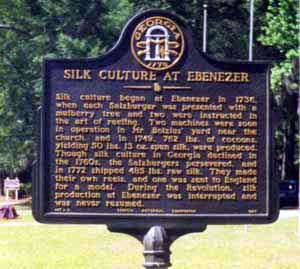
Silk Culture at Ebenezer
Silk culture began at Ebenezer in 1736, when each Salzburger was presented with a mulberry tree and two were instructed in the art of reeling. Two machines were soon in operation in Br. Bolzius' yard near the church, and in 1749, 762 lbs. of cocoons, yielding 50 lbs.13 oz. spun silk, were produced. Though silk culture in Georgia declined in the 1760s, the Salzburgers persevered, and in 1772 shipped 483 lbs. raw silk. They made their own reels, and one was sent to England for a model. During the Revolution, silk production at Ebenezer was interrupted and was never resumed.
Jerusalem Evangelical Lutheran Church
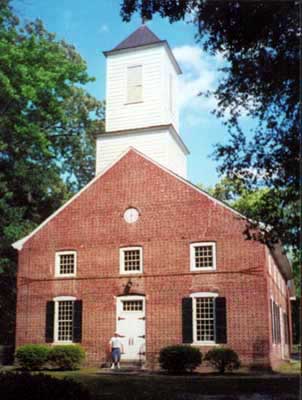
Also known as Ebenezer Church
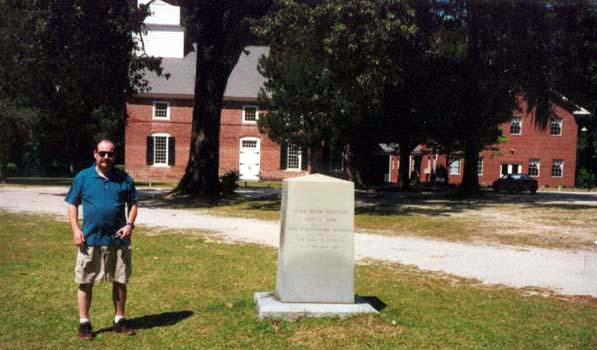
Bruce in front the the Chapel and Parsonage
Jerusalem Lutheran Church was organized in Augsburg, Germany, in 1733 with the Reverend John
Martin Bolzius and the Reverend Israel Christian Gronau as the pastors.
The members had been exiled from their homes in Salzburg, Austria, and
came to Ebenezer for religious freedom.
The first Sunday School in Georgia was held in 1734. The church was built
from bricks made from clay from the area from 1767 to 1769. The
walls of the church are 21 inches thick and some of the original panes
of glass are still in the windows. The bells were brought from Europe
and are still rung before each service.
On April 1, 1774, John Holtzendorff (born1752 in Georgia) married Elizabeth
Ehrhardt in Ebenezer Church. John is our 5th great-grandfather.
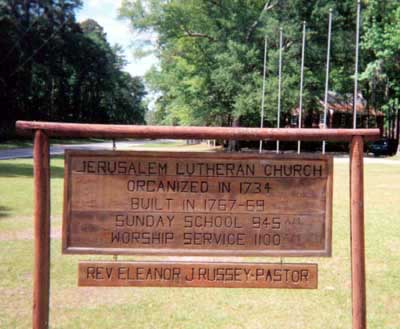
An active congregation still meets in the
Ebenezer Church.
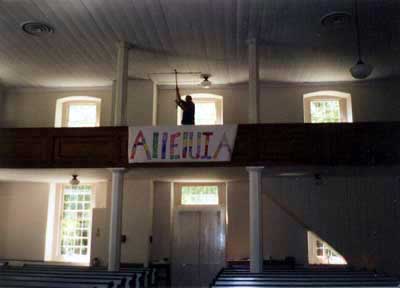
Ben pretends to ring the Church Bell.

The Church Interior
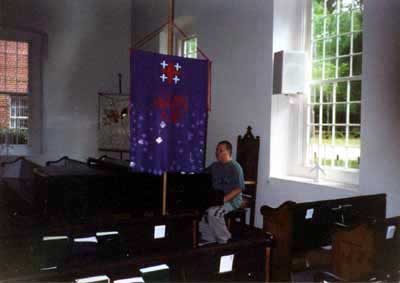
Ben plays the Church Piano.
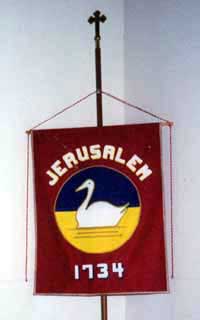
The Swan Banner The Salzburgers of Austria who founded the original community of Ebenezer in 1734 adopted Martin Luther's symbol of the swan. Legend records a statement made by John Huss as he was about to be burned at the stake for his early attempts to reform the church: "You may burn this goose but out of these ashes will rise a swan." Although the original town settlement of New Ebenezer was a battleground for the American Revolution and the War Between the States, Jerusalem Lutheran Church and the Swan which adorns the steeple endured.
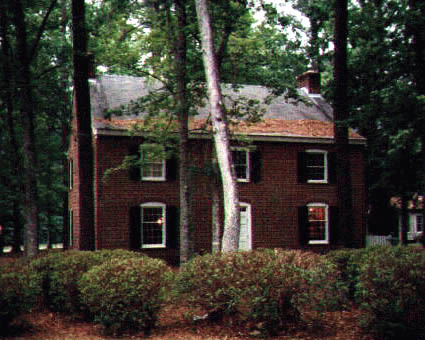
The New Ebenezer Village Museum
Tours are available from the Georgia
Salzburger Society
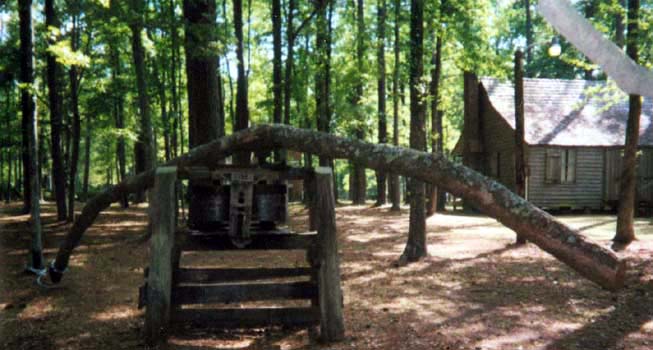
Nearby the Grain Mill still survives.
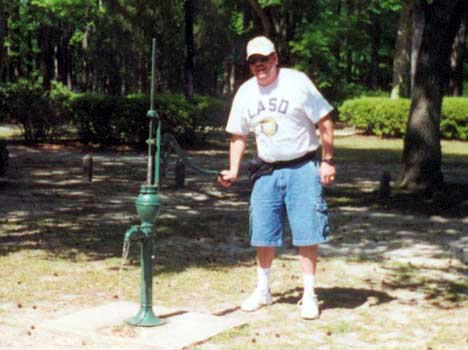
The Pump still works.
Easter Sunday - April 23, 2000

We attended Easter Sunrise Services at the
outdoor amphitheater next to the river.
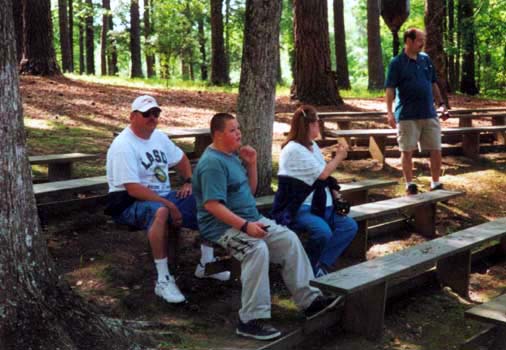
L-R: Dave, Ben, Debbie and Bruce
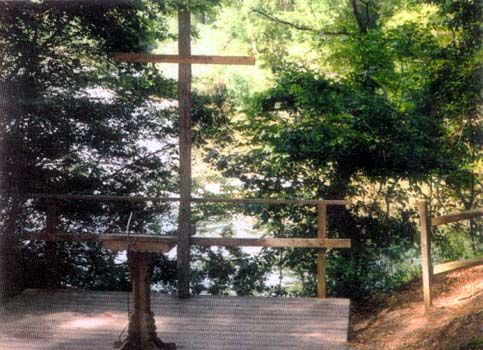
The Alter
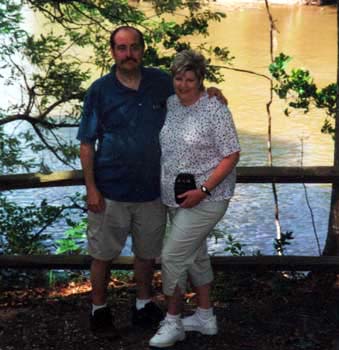
Bruce and Rae next to the river.
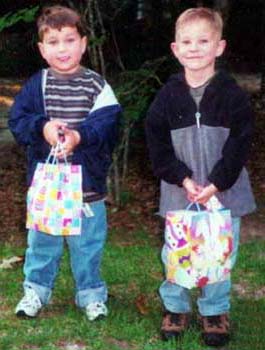
Jarrod and Michael enjoy an Easter Egg Hunt.
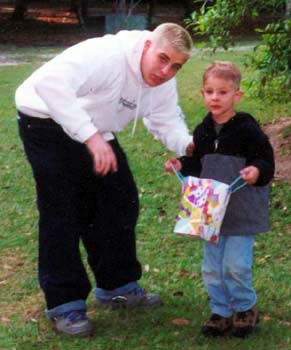
Philip assists Michael in his hunt.
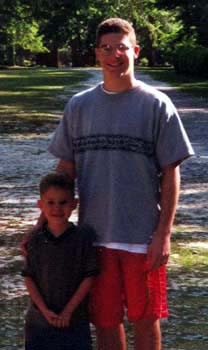
Michael and Tommy

Jarrod and Michael bring eggs to a child's grave.
New Ebenezer Family Retreat Center

We had a wonderful stay at the New
Ebenezer Family Retreat Center
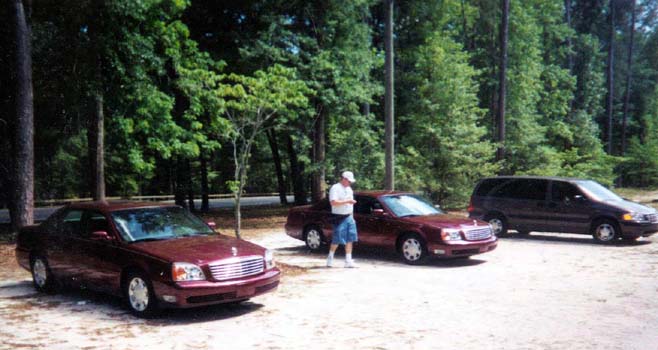
In the parking lot are our fun cars, a red
Cadillac, another red Calillac and a grey Chevy Venture.
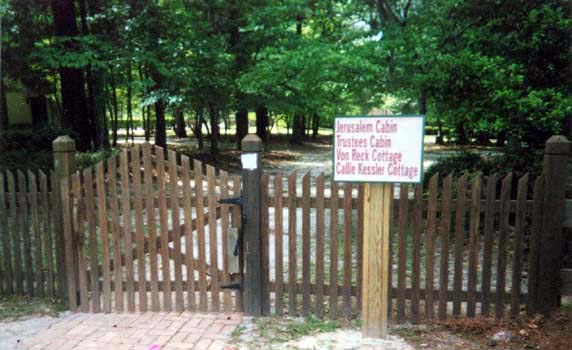
Access from the parking lot is throught this lovely gate.

We stayed in the Von Reck Cottage in the
trees. The cottage has 6 bedrooms so our whole family
of 14 were comfortable.

This is the cottage entry looking through to the back porch.
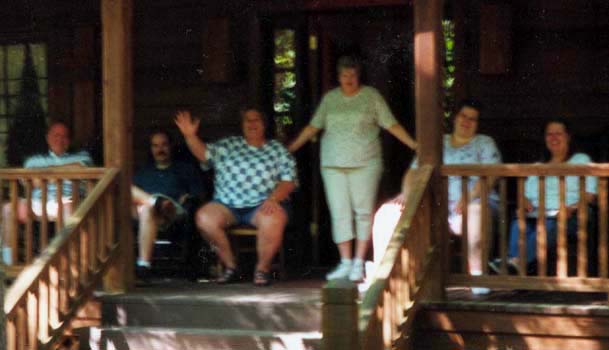
We love this porch. L-R: Chuck, Bruce, Diana, Rae, Shelly and Debbie.
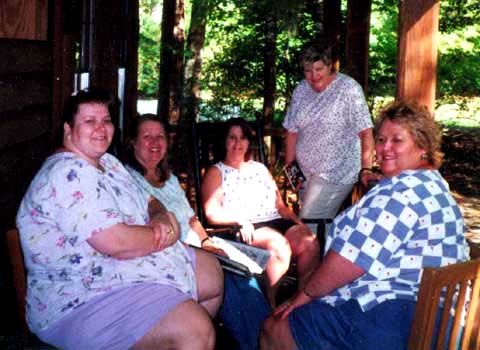
Just reading about our ancestors. L-R: Shelly,
Debbie, Debbie, Rae and Diana
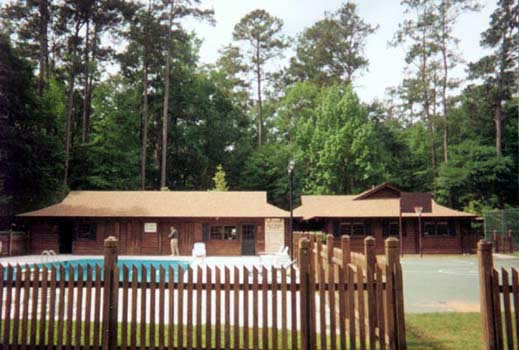
The pool and basketball court.

The Savannah River.
Return to Top
Web Hosting and Design by
Deborah Holtzendorff
©Copyright 2000